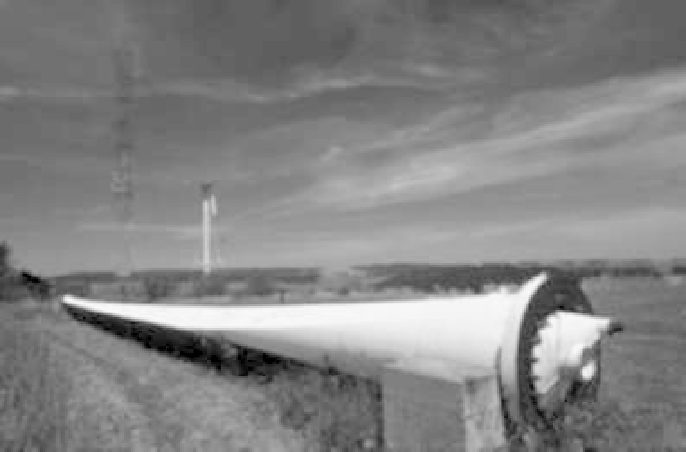Environmental Engineering Reference
In-Depth Information
blades so they whipped out up to 3 m wide. When it was decided
to cut back each blade by 5.5 m this was the end of the ambitious
big project WEC-52. Even though the Voith WEC-52 was the star of
the revived test field in Schnittlingen for only a short time, it was
another gem in Hütter's crown of academic achievements. Hütter's
philosophy was extended by the Voith wind turbine to the limits of
what was feasible with regards to high-speed and weight reduction.
Figure 17.9
Voith WEC-52 blade and Debra 25 wind turbine on the test
field in Stötten
(Photo: Jan Oelker, 2000).
After having been acting director of IFB for five years after
his retirement, he finally withdrew in 1980 and worked only as
consultant. The research work of this visionary thinker had laid the
essential foundations for the use of wind energy. From then on it was
up to his many students to go farther along the road he had opened
with their practice-oriented work.
17.8 Hüter's Heritage
Hütter's blade design principle was already in the late seventies
adopted for the Tvind turbine in Denmark. After 1980 it became
a standard for blade technology in the Danish wind industry, with
thousands of blades fuelling the wind power boom in California.


Search WWH ::

Custom Search